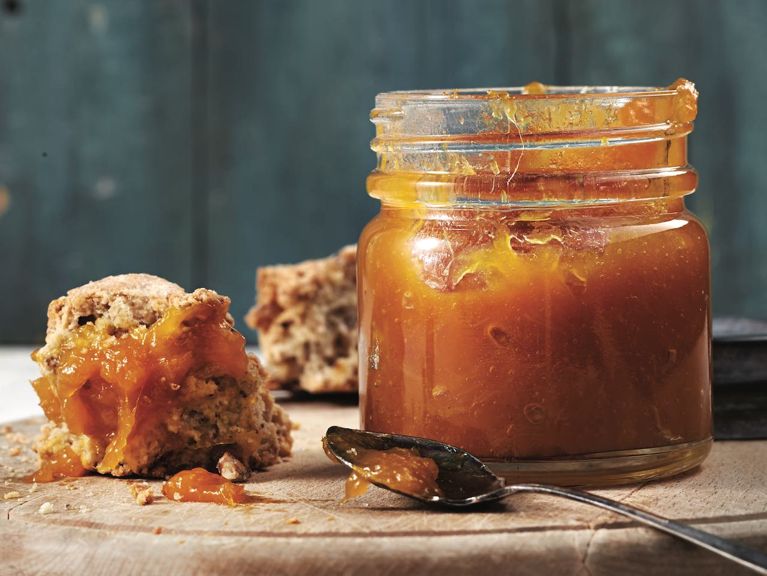This two-ingredient pectin recipe will take your jam- and jelly-making talents to a whole new level.

Photo, Roberto Caruso.
Late summer is the time of year that we love to preserve. It’s the perfect time to can peaches, pears and all kinds of other summer fruit. It’s also the best time to make homemade pectin, an ingredient used to help thicken many jams and jellies.
Pectin is a naturally-occurring gelatinous substance that is extracted from fruits like berries, apples and citrus. For my homemade pectin, I like to use apples with a touch of lemon juice. If you have access to a local farmer and can get your hands on underripe apples, they are ideal because they contain higher levels of pectin. Crab apples are the runner-up in pectin levels if they’re available to you. Otherwise, use tart apples (as I have) such as Granny Smith. Here’s how you make it:
Homemade Apple Pectin
Makes 2 cups
Ingredients
Advertisement
- 3 lbs under ripe apples, crab-apples or Granny Smith
- 3 tbsp lemon juice
Instructions
- CHOP apples into large chunks, including the skins and seeds. Place in a large pot. Add enough water to just cover the apples, about 8 cups. Add lemon juice.
- BRING to a boil. Reduce heat and simmer for 45 minutes to 1 hour, or until reduce has reduced by two-thirds to a half, and fruit is very soft. *See notes below for testing for adequate levels of pectin.
- POUR mixture through a fine sieve. You may need to use the back of a ladle to help push it through. You will have about 4 cups and the liquid will be cloudy. Return liquid to pot, discarding solids.
- BRING to a boil. Boil for 5 to 10 minutes, or until the bubbles are large, the liquid is syrupy and it yields about 4 cups.
- LINE a large bowl with cheese cloth or a very thin kitchen towel. Pour liquid into the centre of the towel then tie ends together. Hang sack over a bowl to drip for 6 hours or overnight. Refrigerate pectin—the liquid that drips out of the cheese cloth, discard the solids that remain in the cloth—in a jar.
As you can see, apple pectin is pretty simple to make and quite inexpensive. However, because it’s natural, and every apple is different, it’s trickier to determine the level of pectin you have achieved in your liquid. To prevent any jamming disasters, it’s a good idea to test your liquid along the way.
The most commonly used test to determine the strength of pectin in your liquid is to vigorously stir together 1 tsp of your cooked liquid (cooled to room temp) with 1 tbsp of rubbing alcohol and let it sit for 1 minute. If the mixture firms up to a jelly, you have a good strength of pectin. If you achieve small lumps of jelly, you have a medium amount of pectin which means you will likely need to use extra pectin and more sugar to achieve a set in your jam or jelly. If there is no solidification, you need to introduce more high-pectin fruit (such as apples) to your pot and continue simmering to extract more pectin into the liquid. (You will then need to repeat the pectin-levels test, and, obviously, the pectin you use for the test isn’t safe to eat because of the rubbing alcohol.)
Although it can sometimes be tricky to achieve a high-enough level of pectin if you aren’t using the proper fruit, I have always had success using apples so don’t be intimidated!
Advertisement
Once you have established a good pectin, use it as instructed per your recipe. The easiest recipes to adapt to homemade pectin are ones that call for liquid pectin over the powdered form. It may take some practice to get it just right, but there is something rewarding about making a recipe that is truly from scratch.
GET CHATELAINE IN YOUR INBOX!
Subscribe to our newsletters for our very best stories, recipes, style and shopping tips, horoscopes and special offers.
